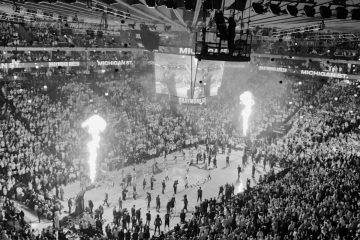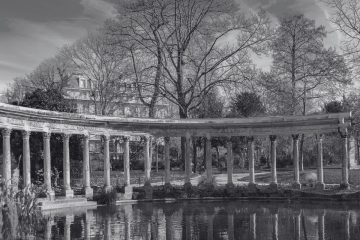What Happened On October 4th?
On October 4, 1895, Horace Rawlins, a young Englishman, stepped onto the Newport Country Club course in Rhode Island, ready to make history at the first U.S. Open. That day, twelve golfers faced a daunting challenge: 36 holes of golf—18 in the morning and another 18 in the afternoon—demanding endurance and skill. Although the event would later gain worldwide recognition, at the time, it remained largely unnoticed by the broader American public. Rawlins, who had arrived in the U.S. only a few months earlier, found himself competing against seasoned professionals who had already built reputations both in the United States and abroad.
Rawlins, just 21 years old, managed to stay calm and collected throughout the tournament, despite the strong coastal winds that swept across the course and made each shot a challenge. Newport’s layout, with its tight fairways and tricky greens, tested the precision of every competitor. Willie Dunn, a well-known British golfer with experience in designing golf courses, took the lead in the morning round. Dunn had not only built courses but had also trained many American golfers, giving him a strong advantage. Yet Rawlins didn’t let Dunn’s reputation intimidate him. He relied on careful shot placement, staying focused and keeping his game under control while other players faltered.
As the afternoon round began, Rawlins adjusted his approach, sticking to a strategy of controlled, accurate shots rather than risky, long drives that could easily have gone awry in the windy conditions. Dunn, who had led earlier, began to make critical mistakes. Rawlins capitalized on those errors, slowly overtaking him hole by hole. By the final hole, Rawlins had posted a total score of 173, finishing two strokes ahead of Dunn. The victory stunned many, as Rawlins was one of the less experienced competitors. His win demonstrated that precision and focus could overcome raw power and experience, especially on a difficult course like Newport.
With his win, Rawlins earned the distinction of being the first U.S. Open champion. He didn’t just take home the title; he also collected $150 in prize money and a gold medal, significant rewards for a golfer at the time. Newport Country Club, where Rawlins worked as an assistant professional, received an additional $50, a notable sum considering the sport’s relatively low profile in America. Unlike today’s athletes, who enjoy fame and sponsorships, Rawlins lived modestly, balancing his competitive aspirations with his duties at the club, where he taught members, maintained equipment, and ensured the course remained in top condition.
Despite the importance of Rawlins’ victory, the U.S. Open did not immediately capture national attention. Golf remained a niche sport in America, mostly limited to the upper classes and a handful of exclusive country clubs. Even major newspapers such as The New York Times barely covered the event. In fact, the entire golf scene in the U.S. was still in its infancy, with fewer than fifty courses in the entire country, most of which were clustered around urban centers like New York and Boston. Rawlins’ victory occurred at a time when many Americans had not yet embraced the game, and few realized how significant the U.S. Open would eventually become.
Following his victory, Rawlins continued his work at Newport, where he became the head professional. His duties included teaching members, overseeing the course’s maintenance, and handling club affairs—a far cry from the celebrity lifestyle enjoyed by today’s professional golfers. Rawlins’ success was remarkable given that he had to balance these responsibilities with his own training and competition. Unlike today, when professionals can dedicate themselves entirely to their sport, early professionals like Rawlins were often expected to manage the daily operations of the clubs they worked at, adding another layer of difficulty to their achievements.
The 1895 U.S. Open also illustrated the close relationship between amateur and professional golfers at the time. The U.S. Amateur, held just one day before on the same course, drew far more attention. In fact, many of the same golfers participated in both events, reflecting the fluid boundaries between amateurism and professionalism that existed during the era. Amateurs, often wealthy and well-connected, enjoyed greater prestige than professionals like Rawlins, who were seen more as laborers serving the country clubs. Rawlins’ victory defied these norms, proving that professionals could compete with and outperform the most celebrated amateurs of the time.
Rawlins’ triumph also highlighted the growing presence of international players in American golf. Most of the top competitors in the early U.S. Opens came from Britain, where golf had a longer and richer tradition. Rawlins, like his fellow British golfers, brought a level of expertise that elevated the competition in the U.S. His win underscored the influence that these early British players had in shaping the future of American golf, helping the sport gain credibility and respect in a country that had yet to fully embrace it.





